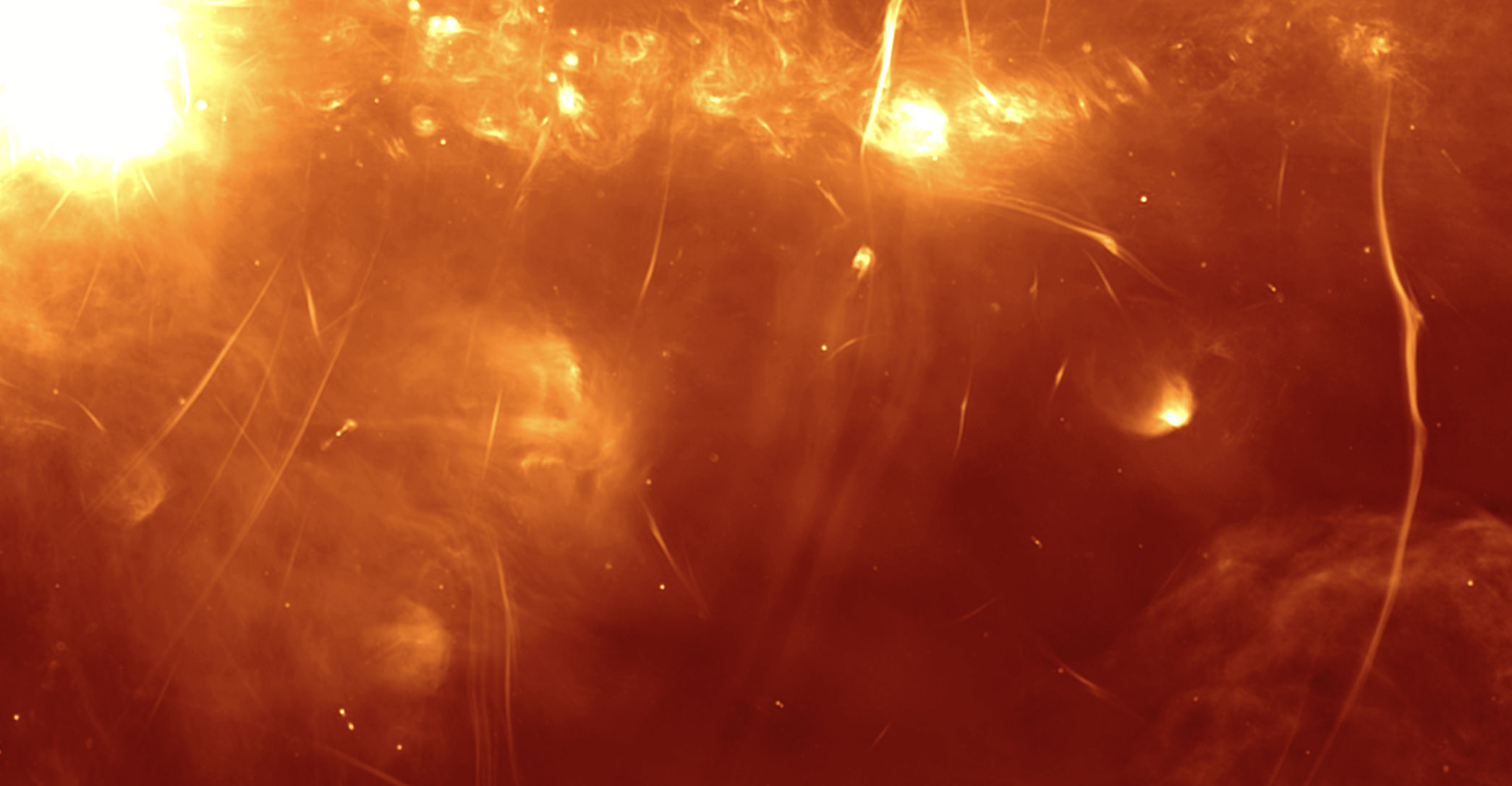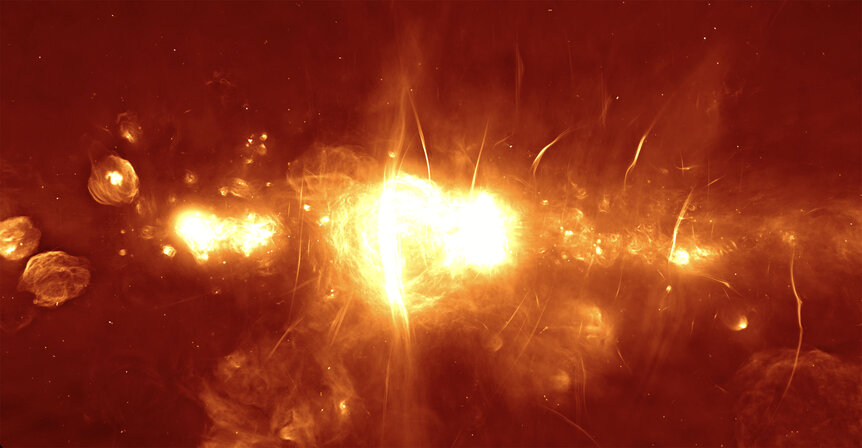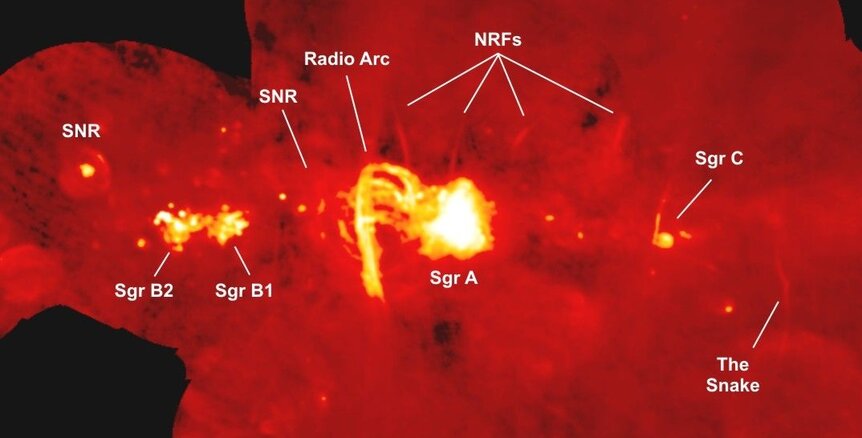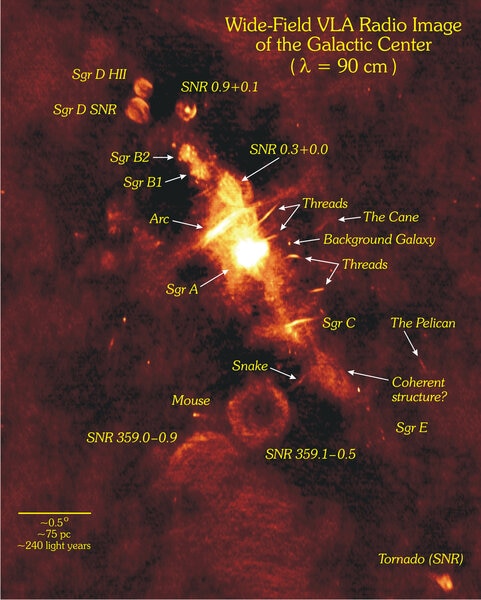Create a free profile to get unlimited access to exclusive videos, sweepstakes, and more!
Stunning chaos in the galactic core

A new radio telescope in South Africa has just been switched on for the first time, and the inaugural image taken by it is jaw-droppingly spectacular.
The telescope is called MeerKAT, and it consists of 64 radio dishes, each 13.5 meters across. That’s not a very large aperture, to be honest — there are far larger radio dishes — but these are spread out over a large area and are designed to work together. When their powers are combined they can reproduce the resolution of a far, far larger telescope.
The first target chosen was a solid choice: the center of our galaxy, where there is a lot to see.
A lot. Look:
Holy yikes. So yeah, this’ll take some explaining.
The size of the image is about 1° x 2°, or very roughly the amount of sky covered by the last phalange of your pinky held at arm’s length. For a telescope, that’s a big chunk of sky. And looking toward the center of the Milky Way is like looking downtown from the suburbs; it’s a happening place.
First, we’re seeing radio waves here. This is a form of light like the kind we see, but with much longer wavelengths. It’s emitted by all kinds of cosmic objects, including gas, dust, stars, and so on. Almost everything you see in this image is gas, but the reason the different sources emit radio waves differ.
For example, the circular structures on the left are caused by violently expanding gas blasted out from exploding stars. This supernova debris slams into the gas around it, exciting it, and causing it to glow. In some of them you can see some asymmetry, where the edge is brighter in certain spots than others. In general, this is because there’s more ambient gas in that direction, and as it piles up it emits more light.
The intensely bright spot to the right of center is the very core of our Milky Way, where a supermassive black hole sits. Surrounding this black hole is a lot of gas, dust, and stars, and these are quite bright in radio waves.
To the left of that is another bright streak of light; this is actually several parallel arched filaments of gas that may be associated with a dense cluster of stars called the Arches Cluster. To the left of that are two bright blobs (called SGR B2 on the left and SGR B1 on the right); these are molecular clouds, dense clots of cold gas and dust busily forming stars.
Which brings us to the weirdest part of this image: all those bright, narrow threads lying everywhere across the shot. Many of these were discovered in the 1980s, and thought to be dust that was aligned with the Milky Way’s magnetic field — much as iron filings align themselves along a bar magnet’s field. But then in the early 2000s better images were taken and it was shown they didn’t all align with the galaxy’s magnetic field. Instead, they seem to align with regions of vigorous star formation, where dense knots of gas are churning out baby stars. These stellar nurseries have magnetic fields themselves, and these may be what are focusing those threads. Mind you, they’re huge; the filaments are up to 100 light years long, a thousand trillion kilometers! Yet for that, they are only a few light years wide, so they are indeed very narrow.
I’m very impressed by MeerKAT’s ability to resolve these filaments! The galactic center is pretty chaotic and messy, and difficult to study. On top of that, all that gas and dust absorbs light at visible wavelengths (the kind of light we see), so we have to rely on other wavelengths to understand what’s going on, and telescopes don’t always have the best resolution at those parts of the electromagnetic spectrum. MeerKAT is changing that.
And this is just the start. MeerKAT is just a precursor to a proposed much larger array of radio dishes called the Square Kilometer Array, or SKA, which is planned to have thousands of such dishes! The “square kilometer” part doesn’t refer to how spread out it is, but the actual physical area of the combined dishes; it will be spread out over thousands of square kilometers of South Africa and Australia. It promises a huge leap forward in radio astronomy, with much higher resolution and ability to see faint sources than any other telescope. MeerKAT, as amazing as it is, will be incorporated into SKA and be just one part of a vastly larger system.
Scheduled construction for SKA begins next year, with Phase I observations planned for 2022. However, the future of the project seems a bit iffy. There are budgetary issues, and it’s unclear how much of the array will get built, when, and what it will actually be. I’ll be keeping my eye on this and I’ll write an update when I know more.





























